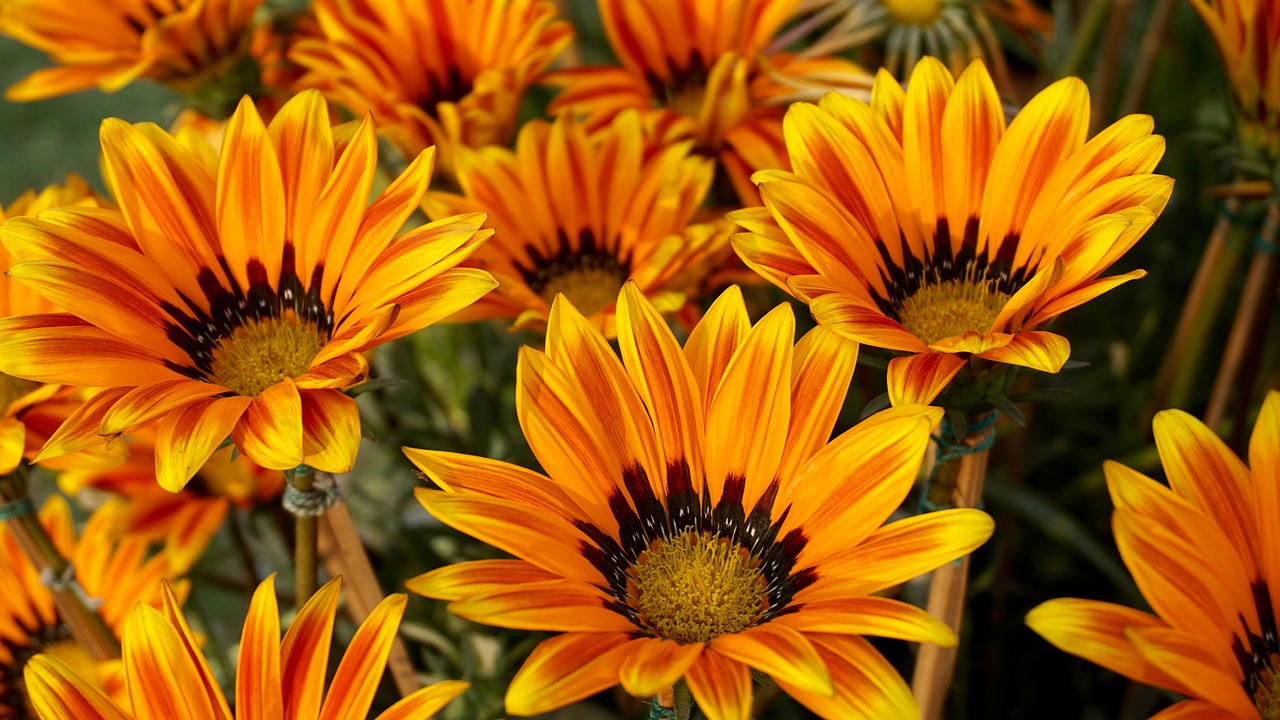Are you looking to add a touch of beauty and creativity to your writing? Learning how to make a floral story or poem can be a wonderful way to express your creativity and bring the beauty of flowers to life on the pages of your writing. Whether you’re an experienced writer or just starting out, this article will guide you through the process of creating a captivating floral story or poem that will inspire your readers and ignite your own creativity.
When it comes to making a floral story or poem, the first step is to choose the right flowers. The flowers you select will play a significant role in setting the tone and atmosphere of your writing. Consider the symbolism, colors, and fragrance of different flowers to create a vivid and meaningful narrative. For example, roses are often associated with love and passion, while sunflowers symbolize happiness and positivity. By carefully selecting the flowers that best align with the emotions and themes you want to convey, you can create a rich and engaging story or poem.
Choosing the Right Flowers
Choosing the right flowers is a crucial step in creating a captivating floral story or poem. When selecting flowers for your writing, it’s important to consider their symbolism, colors, and fragrance to create a vivid and meaningful narrative.
Symbolism plays a significant role in floral storytelling. Different flowers have different meanings and can evoke various emotions. For example, roses are often associated with love and passion, while lilies symbolize purity and innocence. By incorporating flowers with symbolic significance, you can add depth and layers of meaning to your writing.
In addition to symbolism, the colors of flowers can also contribute to the overall mood and tone of your story or poem. Bright and vibrant colors like red and yellow can represent energy and joy, while softer pastel hues can convey a sense of tranquility or nostalgia. Consider the emotions you want to evoke and choose flowers with colors that align with those feelings.
Furthermore, the fragrance of flowers can enhance the sensory experience for your readers. Describing the intoxicating scent of a blooming rose or the delicate aroma of a jasmine flower can transport your audience to the setting of your story or poem. Incorporating sensory details like fragrance can make your writing more immersive and engaging.
Setting the Scene
Setting the scene is an essential aspect of creating a captivating floral story or poem. By using descriptive language and imagery, you can transport your readers to a beautiful garden or a serene meadow filled with blooming flowers. This allows them to immerse themselves in the world you have created and experience the beauty of nature through your writing.
When setting the scene, it is important to engage all the senses of your readers. Describe the vibrant colors of the flowers, the gentle swaying of the petals in the breeze, and the intoxicating scent that fills the air. Use vivid and evocative language to paint a picture in your reader’s mind, allowing them to visualize the scene and feel as if they are right there with you.
To further enhance the setting, you can also incorporate other elements of nature into your description. Imagine the sound of birds chirping, the soft rustling of leaves, or the trickling of a nearby stream. By adding these details, you create a multi-dimensional experience for your readers and make the scene come alive.
Here is an example of how you can set the scene in your floral story or poem:
|
As I stepped into the garden, a kaleidoscope of colors greeted my eyes. The vibrant reds of the roses, the delicate pinks of the cherry blossoms, and the sunny yellows of the daffodils created a tapestry of beauty. The air was filled with the sweet fragrance of blooming flowers, a scent that instantly lifted my spirits. I closed my eyes and listened to the symphony of nature surrounding me. The birds chirped in harmony, their melodies blending with the gentle rustling of leaves in the wind. In the distance, I could hear the soothing sound of water trickling down a nearby stream. With each step I took, the soft grass beneath my feet seemed to whisper its welcome. The warm sunlight filtered through the canopy of trees, casting a dappled glow on the flowers. It was a scene straight out of a fairytale, a place where dreams came to life. |
By setting the scene in your floral story or poem, you create a captivating backdrop for your narrative and draw your readers into a world of beauty and imagination.
Exploring Symbolism
When it comes to creating a captivating floral story or poem, understanding the symbolic meanings associated with different flowers is essential. Each flower carries its own significance and can be used to add depth and layers of meaning to your writing. By incorporating these symbolic meanings into your story or poem, you can create a rich and meaningful narrative that resonates with your readers.
One way to explore symbolism is by researching the traditional meanings associated with specific flowers. For example, roses are often associated with love and passion, while lilies symbolize purity and innocence. By using these flowers in your writing, you can convey these emotions and themes to your readers.
Another approach is to create your own symbolism by assigning unique meanings to different flowers. This allows you to infuse your story or poem with personal significance and create a more intimate connection with your readers. For example, you might choose to use a daisy to represent hope or a sunflower to symbolize resilience.
Additionally, you can use symbolism to create contrast or juxtaposition in your writing. For instance, pairing a delicate and fragile flower with a strong and resilient character can create a powerful visual and emotional impact.
Overall, exploring symbolism in your floral story or poem adds depth and layers of meaning to your writing. It allows you to convey emotions, themes, and ideas in a subtle and evocative way, engaging your readers on a deeper level.
Using Metaphors and Similes
Metaphors and similes are powerful literary devices that can add depth and creativity to your floral story or poem. By comparing flowers to other elements of nature or human emotions, you can create unique and evocative descriptions that capture the imagination of your readers.
Imagine describing a rose as “a flame of passion” or a daisy as “a ray of sunshine.” These metaphors not only bring the flowers to life but also evoke strong emotions and imagery in the minds of your audience. Similes, on the other hand, use “like” or “as” to make a comparison, such as “the tulips danced in the wind like graceful ballerinas.”
By incorporating metaphors and similes into your writing, you can paint a vivid picture of the beauty and significance of flowers. They allow you to create connections between different elements, making your floral story or poem more engaging and memorable.
Creating a Sensory Experience
When crafting a floral story or poem, it is essential to engage the reader’s senses and create a vivid sensory experience. By describing the visual beauty, delicate touch, intoxicating scent, and soothing sounds of flowers, you can transport your readers to a world filled with the enchantment of nature.
To create a sensory experience, start by using descriptive language to paint a picture of the flowers in your writing. Capture the vibrant colors, intricate patterns, and graceful shapes of the petals. Allow your readers to visualize the flowers in their minds, immersing them in the beauty of nature.
Next, explore the delicate touch of flowers. Describe the softness of the petals, the gentle sway of the stems, and the velvety texture of the leaves. Engage your readers’ sense of touch by inviting them to imagine the sensation of running their fingers over the petals or feeling the coolness of a morning dew on a flower’s surface.
Moving on to scent, flowers have the power to captivate with their intoxicating fragrances. Use evocative words to describe the sweet, floral, or musky scents that waft through the air. Transport your readers to a garden filled with the aroma of blooming flowers, allowing them to experience the scent as if they were standing amidst the blossoms themselves.
Lastly, don’t forget about the soothing sounds that can accompany a floral setting. Whether it’s the gentle rustle of leaves in the wind or the buzzing of bees as they collect nectar, incorporate these sounds into your writing. By including auditory details, you can further immerse your readers in the sensory experience of your floral story or poem.
Crafting Engaging Characters
When it comes to creating a captivating floral story or poem, the characters play a crucial role in bringing the narrative to life. By using flowers as symbols or metaphors, you can develop engaging characters that represent different personalities, emotions, or stages of life. Let’s explore how you can craft these characters to add depth and complexity to your writing.
Firstly, consider the symbolic meanings associated with different flowers. Each flower carries its own significance, and by incorporating these meanings into your characters, you can add layers of meaning to your story or poem. For example, a character represented by a rose might symbolize love and passion, while a character represented by a sunflower could embody warmth and happiness.
Furthermore, think about how you can use flowers as metaphors to depict various aspects of human emotions or experiences. Just as flowers come in different shapes, colors, and sizes, so do people. You can use this diversity to your advantage by assigning specific flowers to different characters based on their traits or circumstances. For instance, a character associated with a delicate orchid might represent fragility, while a character connected to a vibrant tulip could symbolize vitality and energy.
By crafting characters in this way, you can create a rich tapestry of emotions and personalities within your floral story or poem. It allows readers to connect with the characters on a deeper level and adds an extra layer of meaning to your writing. So, let your imagination bloom and explore the endless possibilities of crafting engaging characters using flowers as symbols or metaphors.
Weaving a Narrative
When it comes to creating a captivating floral story or poem, weaving a narrative is essential. It involves incorporating elements such as plot, conflict, and resolution to keep readers engaged and immersed in your writing.
First, consider the plot of your story or poem. Think about the journey you want to take your readers on and how the flowers will play a role in that narrative. Will they be a central focus or simply a backdrop? This will help you determine the direction of your story.
Next, introduce conflict into your narrative. This can be a challenge that the protagonist faces or a dilemma that needs to be resolved. Use the flowers as a metaphor or symbol to represent the conflict and explore how it can be overcome.
Finally, bring resolution to your story or poem. This can be a satisfying conclusion or a lesson learned. Consider the impact that the flowers have on the resolution and how they contribute to the overall message of your writing.
By weaving a narrative around your chosen flowers, you can create a captivating story or poem that not only showcases the beauty of flowers but also engages readers on an emotional level. So, let your creativity bloom and start crafting your own floral narrative today!
Exploring Different Literary Forms
When it comes to expressing your floral story or poem, there are various literary forms that you can explore. These forms not only provide different structures and styles but also offer unique ways to convey your creativity and emotions.
One popular literary form is the haiku, a traditional Japanese poem consisting of three lines with a specific syllable pattern. Haikus are known for their simplicity and focus on capturing a single moment or image. By using haiku in your floral story or poem, you can create a concise and impactful piece that highlights the beauty and essence of flowers.
Another form to consider is the sonnet, a 14-line poem with a specific rhyme scheme. Sonnets are often used to express deep emotions and explore complex themes. By incorporating sonnets into your floral story or poem, you can delve into the deeper meanings and symbolism behind the flowers, adding layers of depth and complexity to your writing.
For those who prefer a more free-flowing and unrestricted approach, free verse is an excellent choice. Free verse allows you to break away from traditional poetic structures and experiment with your own rhythm and style. This form gives you the freedom to express your floral story or poem in a way that feels natural and authentic to you.
By exploring different literary forms such as haiku, sonnet, or free verse, you can discover new ways to express your floral story or poem. Each form offers its own unique advantages and allows you to experiment with structure and style, enabling you to create a truly captivating and original piece of writing.
Adding Personal Touches
When creating a floral story or poem, one of the most effective ways to make it unique and relatable is by adding personal touches. By infusing your own experiences, memories, or emotions into your writing, you can create a deeper connection with both yourself and your readers.
Start by reflecting on your own experiences with flowers. Think about special moments or significant events in your life that involved flowers. Did you receive a bouquet on your wedding day? Did you spend summers picking wildflowers in your grandmother’s garden? These personal memories can serve as inspiration for your floral story or poem.
Additionally, consider the emotions that different flowers evoke in you. Do roses remind you of love and romance? Do sunflowers bring a sense of joy and happiness? By tapping into these emotions, you can create a more authentic and heartfelt piece of writing.
Remember, the key to adding personal touches is to make your writing relatable. Connect your experiences and emotions to universal themes and feelings that your readers can identify with. This will help your floral story or poem resonate with a wider audience and create a lasting impact.
Frequently Asked Questions
- Q: How do I choose the right flowers for my floral story or poem?
- Q: How can I set the scene in my floral story or poem?
- Q: What is the significance of exploring symbolism in floral writing?
- Q: How do metaphors and similes enhance floral writing?
- Q: How can I engage the reader’s senses in my floral story or poem?
- Q: How can flowers be used to develop characters in floral writing?
- Q: How do I weave a narrative around my chosen flowers?
- Q: What are some different literary forms I can explore in floral writing?
- Q: How can I make my floral story or poem more personal?
A: When selecting flowers, consider their symbolism, colors, and fragrance. These elements can help create a vivid and meaningful narrative in your writing.
A: Use descriptive language and imagery to transport readers to a beautiful garden or a serene meadow filled with blooming flowers. Paint a picture with your words.
A: Exploring the symbolic meanings associated with different flowers adds depth and layers of meaning to your story or poem, enhancing its overall impact.
A: By comparing flowers to other elements of nature or human emotions, metaphors and similes allow you to create unique and evocative descriptions in your writing.
A: Engage the reader’s senses by describing the visual beauty, delicate touch, intoxicating scent, and soothing sounds of flowers, creating a sensory experience.
A: Flowers can be used as symbols or metaphors to represent different personalities, emotions, or stages of life, adding depth and complexity to your characters.
A: Incorporate elements such as plot, conflict, and resolution to create a captivating story or poem that keeps readers engaged and connected to your chosen flowers.
A: Explore various forms like haiku, sonnet, or free verse to express your floral story or poem in different ways, allowing you to experiment with structure and style.
A: Infuse your own experiences, memories, or emotions into your writing, making it more relatable and adding a personal touch to your floral story or poem.


